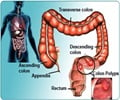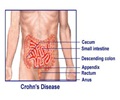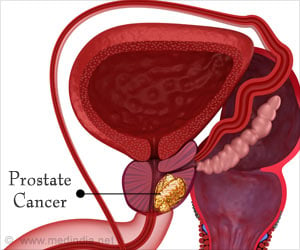
Colorectal cancer develops slowly, therefore screening for the disease is especially important. Colonoscopy screening allows for the detection and removal of precancerous polyps (small growths in the colon) during the same exam and before the polyps turn into cancer. One of the most important steps in colonoscopy is patient bowel preparation. Adequate preparation ensures that the colon is thoroughly cleaned before the exam so that the physician can clearly see the entire colon to look for abnormalities, such as colon polyps, during the procedure. Cleansing the colon before a colonoscopy is called bowel preparation, or "prep." It involves taking medication that causes diarrhea, emptying the colon. The medication is taken by mouth, and comes in liquid or tablet form. Patients also need to change what they eat during the day or two before the colonoscopy.
A good-quality bowel preparation is essential for colonoscopy to be effective. Inadequate bowel preparation can result in incomplete procedures, missed lesions, higher complication rates, and increased costs resulting from repeated procedures. The polyethylene glycol (PEG) solution is commonly used as a cleansing bowel preparation because it is safe and does not cause major fluid and electrolyte shifts. A major disadvantage, however, is the large volume required to be taken over a short time that may result in patient intolerance and poor compliance, leading to a poor preparation. Recent studies have explored new approaches in administering PEG solutions to improve patient tolerability, compliance, and efficacy. Splitting the preparation is such an approach. Patients are advised to consume two or three liters the night before and one or two liters the morning of the procedure.
"A recent meta-analysis of randomized studies using split-dose preparations suggested a significant improvement in the quality of preparation and patient compliance. However, the effects of split-dose preparations on other quality indicators of colonoscopy, such as cecal intubation (colonoscopy completion) and adenoma detection rates, have not been evaluated, as far as we know," said study lead author Suryakanth R. Gurudu, MD, Division of Gastroenterology and Hepatology, Mayo Clinic Arizona. "In our study, we have demonstrated, for the first time to our knowledge, that system-wide implementation of a split-dose preparation for colonoscopy significantly improves both polyp detection rates and adenoma detection rates as well as improves the quality of the preparation and colonoscopy completion rates. These results confirm the benefit of split-dose preparations and the importance of bowel preparation in the detection of colon polyps."
MethodsThe primary aim of this study was to compare polyp detection rates (PDRs) and adenoma detection rates (ADRs) before and after implementation of split-dose preparations (SDP) as the preferred bowel preparation in a tertiary GI practice. Secondary goals were to compare the quality of the preparation and cecal intubation rates (colonoscopy completion rate) before and after implementation of the SDP. This was a retrospective study at Mayo Clinic Arizona. Electronic medical records of all the patients who underwent colonoscopy from January 2009 to December 2009 (before SDP) and from October 2010 to March 2011 (after SDP) were reviewed. All patients who underwent colonoscopy for screening and surveillance of colon polyps and cancer were included in the study.
The bowel preparation choices for split dosing were four-liter PEG electrolyte solution or MoviPrep (Salix Pharmaceuticals Inc., Raleigh, NC). Patients were instructed to avoid eating a high-fiber diet for two days before taking the bowel preparation and to drink only clear liquids for the entire day before colonoscopy. With the four-liter PEG solutions, patients were instructed to drink three liters the night before, starting at 6:00 pm, and one liter at least four hours before the scheduled procedure time on the day of the procedure. Patients using MoviPrep (after preparing the solution according to manufacturer's specifications) were instructed to drink half of the volume the night before colonoscopy, starting at 6:00 pm, and the other half at least four hours before the scheduled procedure time on the day of the procedure. All patients were instructed to take nothing by mouth for at least three hours before the procedure. Patients who had an early morning procedure or long travel time to the endoscopy unit were offered the option of taking the entire preparation the night before (nonsplit dose).
Advertisement
Bowel preparation quality also improved significantly in the post-SDP group. The improvement was noted mainly in patients rated with good to excellent preparations (34.9 percent to 53.9 percent), at the expense of those rated with fair to adequate preparations (54.3 percent to 37.8 percent), and to a lesser degree in those with poor to inadequate preparations (10.6 percent to 8.3 percent).
Advertisement
Source-Eurekalert













